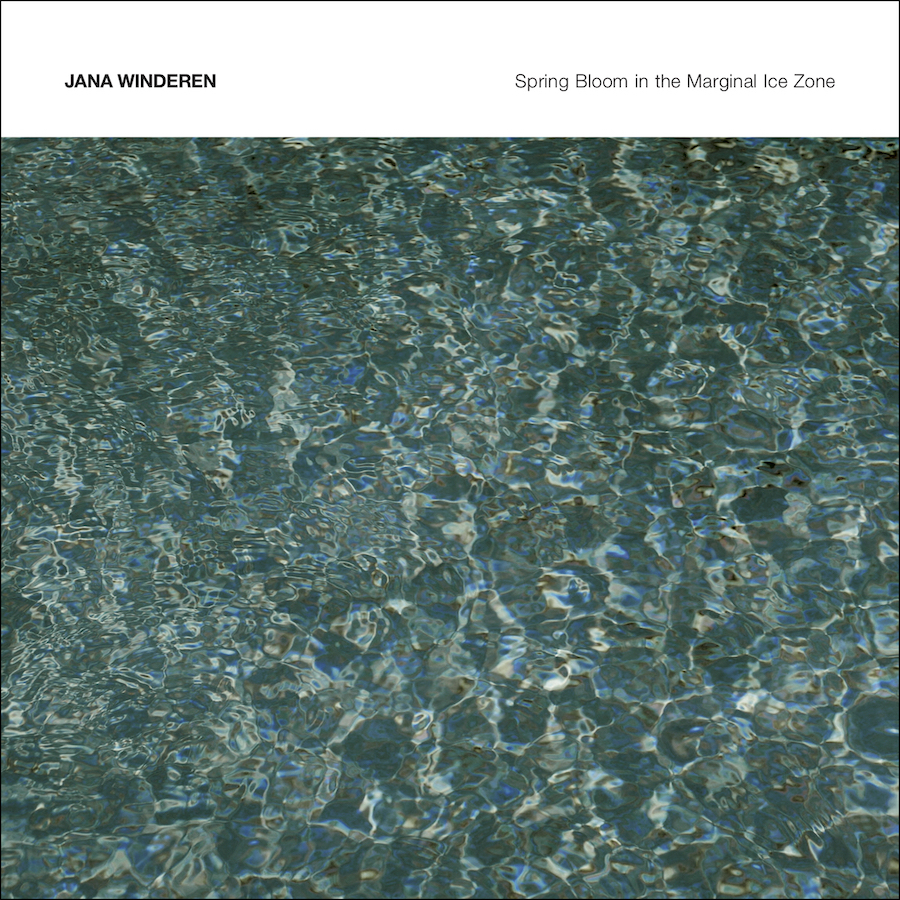Touch has just re-issued sound artist Jana Winderen’s Spring Bloom in the Marginal Ice Zone, a startling and movingly intimate exploration of subaquatic life in the Arctic. And not a moment too soon.

The recording begins with excerpts from an interview with marine scientist and ecologist Carlos Duarte describing what happens during the annual spring bloom in the marginal ice zone of the Arctic, the transitional space “between the open ocean and sea ice,” according to the Norwegian Polar Institute.
Owing to the general deep freeze and the lack of steady warming sunlight during the winter season in the Arctic, there’s relatively little biological activity beyond extant organisms feeding off leftovers from the preceding season. But starting around February each year, the sun slowly re-emerges, melting off snow cover and thinning out ice, and with that the spring bloom is on. Within a few weeks, ice algae begins to photosynthesize, and diatoms and plankton begin to bloom, depleting the carbon dioxide in the water and creating the largest carbon sink in the biosphere. No small thing, as this also helps sustain life – the phytoplankton alone produces half the oxygen the human race relies on. Through various levels of food chain predation, those diatoms and other organisms ultimately become meals for birds and mammals indigenous to the region. Once stripped of their nutrients, what remains sinks to the ocean floor and is consumed by the organisms there that are in turn fed on by other organisms, and so on.
Life, in other words. Non-human life. Not that the Arctic has evaded the crushing impact of a human touch. It remains to be seen what effect the climate crisis will have on the region but the prognosis is dire. To go back to Duarte, he states near the end of his interview that while the rest of the world is looking at a two-degree threshold for an increase in global temperature as a kind of limit for our chances to contain the effects of global warming, the arctic has already blown past that to become the leading area for developing climate change. He sees the region losing all of its ice in the future, sea ice as well as glaciers on land, with no way to prevent any of it from disappearing. Anyone paying even the slightest amount of attention to news like this knows that dangerous rises in sea levels are just the beginning of what we can expect to come our way…
Rather than collapsing in despair in the face of such information, Winderen captures the sounds of this crackling, chirping, whooping ecosystem in full swing. Moaning seals, singing whales, the sounds of blooming plankton, clicking crustaceans, and melting ice are all pristinely recorded and cast in a multi-dimensional 35-minute symphonic drift. Two versions are offered: a headphone mix and a speaker mix, with slight differences between the two in terms of material. In terms of affect, I’d have to recommend the headphone mix. From the comfort of my chair, it was a unique pleasure to be submerged into the unexpected warmth of the marginal ice zone, a place teeming with life forms I felt sure I could have leaned forward and plucked from the speculative space Winderen opened in front of me. It’s a rich and strange world, well beyond the reach of most of us, so getting contact with it, even in this form, is a rare gift.
And it’s a pleasure to be reminded that we are surrounded by life and mystery, not just greed and cruelty and hopelessness.
The time may already be here when we, as a species, will have to think beyond ourselves when we think about the future. Many of us won’t survive the destruction of the natural world that’s coming. What can we do to ameliorate some of that destruction? To preserve at least some of what makes this place so singular and precious?
Spring Bloom is a work of both inspiring imagination and deep compassion – things that seem to be in dangerously short supply right now. Do yourself a favor and check it out.